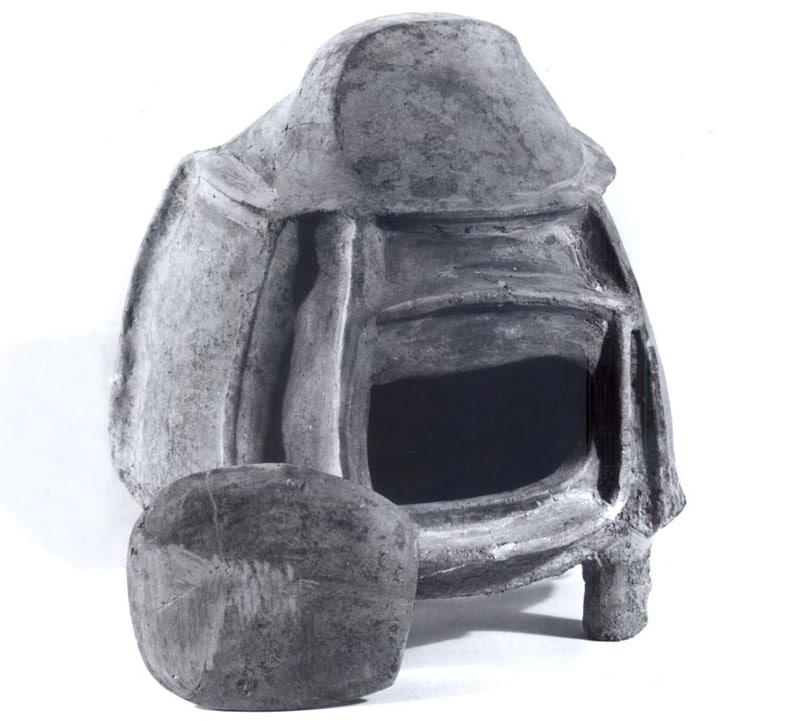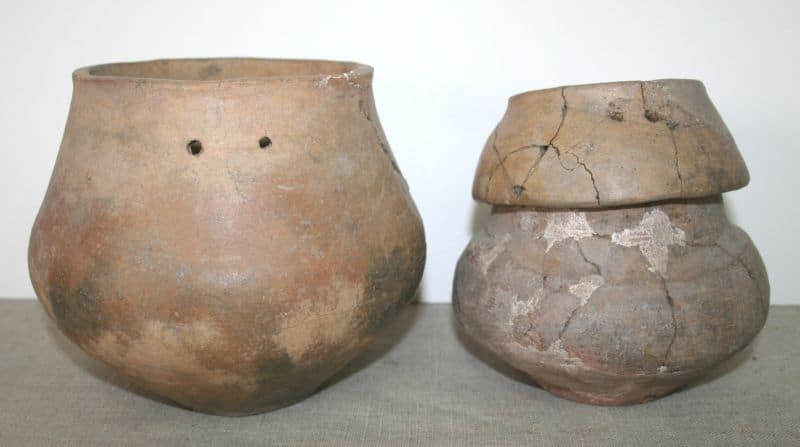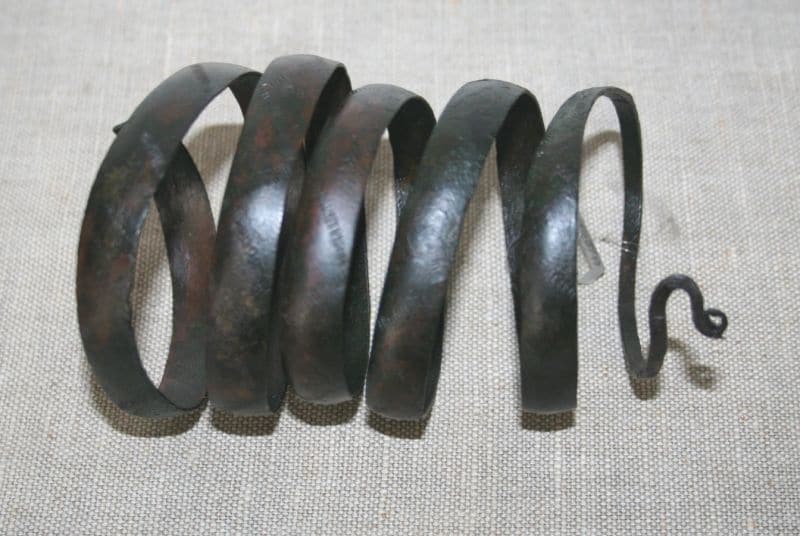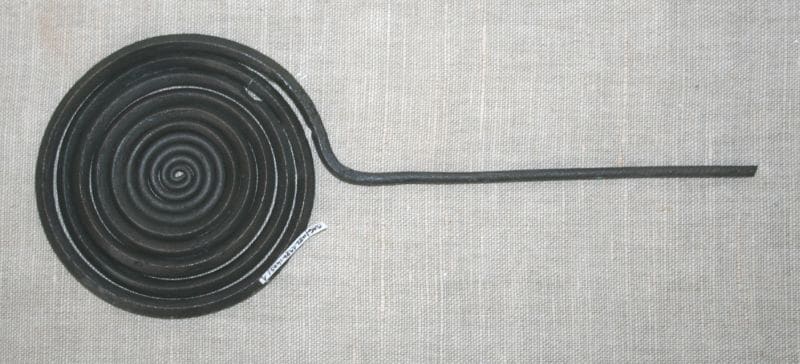The department collects…
…artefacts that are the material remains of the following cultures from the middle and late Bronze Age and the early Iron Age: the Lusatian culture (Kashubian group) and the Pomeranian culture (also known as the East Pomeranian culture). These assemblages are dated to the 15th–3rd century BC and almost all of them come from sites in the present-day Pomorskie Voivodeship.
What will we find there?
The department has a large collection consisting mostly of pottery recovered from excavations at numerous cemetery sites of the Lusatian culture Kashubian group (e.g. Siemirowice) and Wielkowiejska phase (e.g. Luzino, Władysławowo-Chłapowo, Połchowo, Gościcino, Puzdrowo), and of the Pomeranian culture (e.g. Stare Polaszki, Niepoczołowice, Niestępowo, Rąty, Żakowo, Zawory, Głazica, Rąb).
Sar attraction: urns for storing the ashes of the dead
Exceptional finds in our collection include three house urns. The shape of these ceramic cremation urns probably resembles that of the houses or granaries that were built during this period (Sychowo and Rybno). Our collection also includes an extensive assemblage of early Iron Age face urns. Modelled in clay on the necks of these vessels are facial features: eyes, nose, mouth and ears, either individually or as a whole set. Initially it was believed that these were attempts to depict the deceased individual. Using subjective appraisals of their aesthetic appearance, some scholars even tried to divide the urns into female (prettier features) and male (uglier ones) categories. The increasing use of anthropological research has shown that there is no evidence to support these ideas. It is now thought that these images relate to the Magna Mater cult, which was becoming widespread in Europe during the Bronze Age and early Iron Age, and that they represent her as a deity and protector of the dead. On some of the urns there are stylised human figures, depictions of carts, animals (deer) and even dress accessories (e.g. pins).
Settlement studies
We have a large group of artefacts recovered from settlement sites, in particular from a vast settlement complex at Juszkowo, which lies at the heart of a settlement microregion centred around the lower reaches of the River Radunia (and includes settlement sites in Pruszcz Gdański, Straszyn and Cieplewo). The department’s collection also includes artefacts from excavations at settlement sites in the Kashubian and Starogard Lakelands and the Tuchola Forest (Odry, Chmielonko, Stara Kiszewa, Nowy Barkoczyn). Excavations carried out during 1998–2004 along the route of the A1 motorway led to the discovery of many archaeological sites dating from the Bronze Age and early Iron Age. The large numbers of artefacts we found tell us about the life and material culture of the people who lived in these areas at that time, including the Kociewie region, which had earlier been a blank spot on the archaeological map of Pomerania. We also have a sizeable assemblage of finds from fieldwalking surveys carried out in the 1950s, and then regularly from the 1970s onwards across the whole voivodeship as part of the nationwide AZP archaeological survey project.
Artefacts from an earlier museum
Our department also houses some artefacts from the collections of the former Gaumuseum für Vorgeschichte. The extant materials from this German museum include pottery, metalwork and an assemblage of over 500 face urns.
What else?
Among the other objects in our collection is a large assemblage of artefacts made of bronze and iron (vessels, axes, swords, belt buckles, arrowheads, necklaces, ankle rings, bracelets, earrings, pins), mostly found as parts of hoards, as well items of various form and function made of stone, flint, wood, horn and antler. The most interesting and important ones include a group of over 600 casting moulds found at the Juszkowo settlement, which was a local centre of bronze production, a logboat recovered from a peat bog in Góry Orle in the early 19th century, and an early Iron Age wooden ard from Lisie Jamy.
Contact
Dział Epoki Brązu i Wczesnej Epoki Żelaza
Piotr Fudziński
p.fudzinski@archeologia.pl
tel. +48 58 320 31 88
1. Eye-motif urn and pot covered with eye-motif lid, Luzino, Wielkowiejska phase, 700–550 BC.
2. Cremation urn, Mściszewice, Lusatian culture, 1200–700 BC.
3. Bronze armlet, Dobrzyca, Lusatian culture, 900–700 BC.
4. Bronze pin with spiral head, Lipinka, ?Lusatian culture, 1100–700 BC.
5. Bronze hoard – ankle rings and bronze axes, Rekowo, Pomeranian culture, 700–400 BC.









